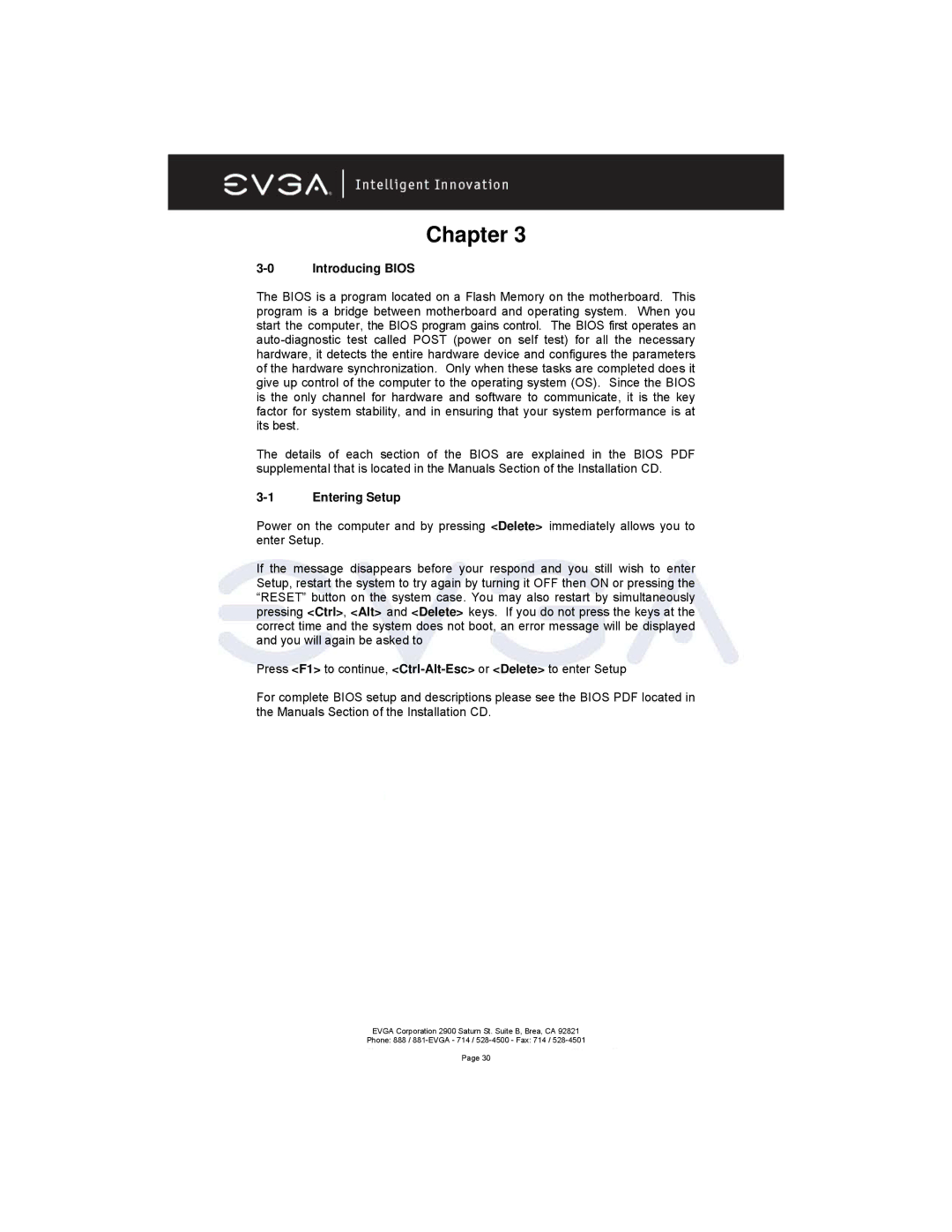
Chapter 3
3-0 Introducing BIOS
The BIOS is a program located on a Flash Memory on the motherboard. This program is a bridge between motherboard and operating system. When you start the computer, the BIOS program gains control. The BIOS first operates an
The details of each section of the BIOS are explained in the BIOS PDF supplemental that is located in the Manuals Section of the Installation CD.
3-1 Entering Setup
Power on the computer and by pressing <Delete> immediately allows you to enter Setup.
If the message disappears before your respond and you still wish to enter Setup, restart the system to try again by turning it OFF then ON or pressing the “RESET” button on the system case. You may also restart by simultaneously pressing <Ctrl>, <Alt> and <Delete> keys. If you do not press the keys at the correct time and the system does not boot, an error message will be displayed and you will again be asked to
Press <F1> to continue,
For complete BIOS setup and descriptions please see the BIOS PDF located in the Manuals Section of the Installation CD.
EVGA Corporation 2900 Saturn St. Suite B, Brea, CA 92821
Phone: 888 /
Page 30
